The Vintage Bump:
My Obsession with Midcentury Maternitywear
Amidst the constant queasiness of the first trimester of pregnancy, one of the only perks is you pretty much have to buy new clothes. I swiftly learned that if you wear a lot of tight or wasp-waisted vintage and 1950’s style garments (like I do!), your clothes may stop fitting you earlier than your pregnant friends who don’t dress vintage. As a matter of fact, I couldn’t wear some of my regular clothing by Week 6 (I found out really early). By Week 10, I had gone from a 26” waist to a 28” waist. By Week 14, I’d added 2” or more all over. And if you’re used to tucking your shirts into high-waisted pants, that trick where you use a pony-tail holder to keep the top button of your pants closed that all your non-vintage friends recommend is not going to work for you. So during that miserable first trimester, near obsessive online searches for fabulous midcentury maternity were one of the main things that kept me going.
But one thing I was been really surprised by is the number of people who said, “Oh, you’re looking for vintage maternity? Good luck with that! It’s so hard to find.” This has not been my experience. As a matter of fact, I’ve had an easier time locating vintage maternity than almost any other vintage item I collect (Frederick’s of Hollywood? Midcentury swimsuits with cutouts on the sides? Lame? Fringe? All definitely more elusive).
I’m not sure what the source is of this myth that vintage maternity is hard to find, but I see it crop up all the time, and it really bugs me. A simple search for vintage maternity will definitely turn up some listings from sellers claiming items are all-caps “RARE.” This is not true. If it’s so highly sought, why don’t vendors bring it to shows? People aren’t asking for it, that’s why! And if it’s so elusive, why does a search on Etsy for “1950’s vintage maternity” turn up over 600 items, while a search for, for example “1950’s vintage JD” turns up roughly 150? I mean, come on, there was literally a baby boom! What do people think all those pregnant women were wearing?
No, in actuality, vintage maternity from the 1950s and ’60s is comparatively easy to find. And if you’re lucky enough to be a small size, you’ll fit into a lot of it (and even if you’re not, I’ve definitely encountered some pieces both on the Internet and in the wild that will be too big for me even at my largest – so it IS out there!) If you learn exactly what you’re looking for, it’s not hard to spot (the slightly more elusive) maternity from the 1940s and 1930s as well.
So, while I’m not a dealer or a professional, nor would I claim to be, I humbly offer the following tips as an amateur collector who has amassed a capsule collection of approximately 30 true vintage maternity pieces from the 1930s-1960s in the past seven months of pregnancy.
1. Just search for it.
Searching for “vintage 1950’s maternity” and “vintage 1940’s maternity” on eBay and Etsy turns up a lot of stuff. It’s on there, and it’s NOT expensive. I’d say the first five pieces I bought, I didn’t spend more than $45 on a single item, and most were $15 or under. I’m not talking about schlock, either. Those $45 were spent on a gorgeous floral 1940’s cold rayon set. These prices are comparable to the sale prices I see on popular modern maternity brands like Seraphine, pinkblush, etc., and the lower end of what I spent is comparable to even more budget-friendly options like Old Navy.
2. Then learn the brand names and search for them.
Once I started searching for maternity stuff generally, I noticed that many of the same brand names cropped up again and again – some of the brands are obviously maternity brands (Betty Lou Maternities, Hi-Stork, etc.) and some even make punny references to being an expectant mother (e.g., Expectantly Yours, An Heir Conditioned Maternities (yuk yuk), Stork-a-Lure, etc.). Others, like Page Boy of Dallas, Helene Scott and Chaz L Lewis of Hollywood, sound like regular brand names even though they were companies that produced exclusively maternitywear.
What this means is that vendors sometimes have maternity items and don’t know it. So when I started searching by individual brand name, I found an additional swath of items that were for sale, were often super cheap, and hadn’t tripped my previous searches for maternity items because they weren’t listed as such. Using this method, I bought a cute Juliette Maternities yellow 1960’s smock top with rickrack trim for $6. At the bottom I’ve included a list of many of the vintage maternity brand names I’ve encountered, for your searching pleasure.
3. Then learn the styles and search for them.
Some of this is pretty intuitive. For example, you don’t have to do a ton of research about vintage fashion to realize you can also turn up vintage clothes that will work for maternity – whether they were intended as such or not – by searching for “1960’s kaftan,” “1950’s trapeze top,” or “1940’s swing coat.” However, learning a few tricks about vintage maternity styling can be a huge help in finding actual maternity stuff. I learned a lot from reading just two well-researched blog posts about it: one from the blog Vintage Dancer, called “Vintage Maternity Clothes History” features lots of great catalog images; and the other, from the sewing blog Just Skirts and Dresses, called “Vintage Maternity Clothes – How Did They Do It?” includes great images of vintage maternity patterns and an in depth discussion of cuts and styles from the 1920s through 1960s.
I learned that it was considered bad form to wear dresses and tops that rode up higher in the front because of your bump. Better styling would be to select a maternity-specific item with extra length in the front to accommodate your growing belly! This means that an easy check for a maternity top or dress is: is it slightly longer in the front than it is in the back? Here’s a picture of what I’m talking about, that allowed me to spot an unlabeled Harlequin print 1950’s maternity top in the wild.
I also learned about all the absolutely ingenious skirt closures that existed before elasticated fabrics were popular. I found these most frequently on skirts and pants from the 1950s and 1960s. The three most common types are the bump cut-out, the multi-button, and a truly ingenious sliding double-zipper closure. A multi-button skirt fit me from 8 weeks pregnant to 34 weeks pregnant without being elasticized at all. Again, the latter two are features that dealers sometimes don’t catch or understand, but you can if you’re looking for them.
Another key discovery was that in the 1930s and 1940s, maternity wasn’t flaunted publically the way that it was even in the 1950s – especially if women had to work, it was too risky that there might be a negative impact on their placement in the workforce (remember, in the U.S., the Pregnancy Discrimination Act was only passed in 1978 – and I gather the UK didn’t outlaw discrimination against the pregnant until the Equality Act of 2010!). Therefore, women who needed to be out of the home tried to hide their pregnancies until it was unavoidably obvious. You can see that ads from this period, and even dress labels, emphasize how well the garments will conceal (rather than display!) the baby bump.
This manifested in maternity fashion. “Maternity” styles were often simply wrap dresses or dresses with adjustable, tied waistbands – but are one of the major type of “maternitywear” being worn at that time. Thus, searching for “1930’s wrap dress” or “1940’s adjustable waist” is going to get you much farther than searching for “1930’s maternity” will. I found that many dealers who hadn’t themselves tried to wear vintage through a pregnancy just aren’t keyed in to this aspect of women’s fashion – even if in the back of their minds they know about it! – so they won’t be flagging it in their listings.
Further, because of the emphasis on “make do and mend” during the 1930s and 1940s, items that started out as maternitywear would often be tailored slightly after the baby’s birth and used for regular wear. So a wrap dress with multiple hook and eye closures to accommodate a growing belly could just have the larger closures removed and be used on the smallest setting after baby was born. When looking at dresses that close with wraps or snaps, a large section of extra fabric could be a giveaway that the item was once a maternity dress, and with the addition of a few hook and eye closures, could easily be one again.
4. Let all your vintage friends and dealer friends know you’re looking.
I put out an ISO on social media, and DM’ed my vintage dealer friends on Instagram letting them know I was on the hunt. This turned up a lot of stuff. People only need baby clothes for a little while. So some vintage friends (and new acquaintances!) who were done with baby-making had a great pieces to pass on. And some dealer friends were able to dig up a few pieces they had but hadn’t been bringing to shows or hadn’t prioritized listing online because they didn’t think anyone would be interested. I found some fun pieces this way. The best was that my mother-in-law was able to go up into her attic and dig up 6 beautiful pieces from 1953, when her mom had been pregnant with her.
5. Ask new dealers you meet in the wild (and ask them about the specific styles too).
I think a lot of folks can be intimidated asking dealers about specific items – I sometimes am because I’m worried it will make me feel obligated to buy anything they show me – but in this case it was really key for me because dealers often don’t put maternitywear out. About 50% of dealers I spoke with had something squirreled away in the back room or in a closet at home that they hadn’t put out or listed online because they didn’t think anyone would be interested. Always let the vendor know you’re looking for “midcentury maternitywear, and any dresses or skirts from the 1940s and earlier with a wrap closure or an adjustable waist.” Mentioning the styles specifically is key, because sometimes the dealer is just not thinking about a particular feature as being maternity until you mention it. For example, I found this sweet, delicate adjustable 1930’s day dress that way.
That’s it for the tips. Without further ado, here’s the catalog of vintage maternity brand names I dug up. It’s by no means comprehensive, but it should provide a starting point for those who are searching. Enjoy the bad puns, and happy shopping!
- An Heir Conditioned Maternity
- Betty Lou Maternities
- Chaz L Lewis of Hollywood
- Coming Attraction
- Expectantly Yours
- Gerson Kaufmann
- Helene Scott
- Hi-Stork
- Johnston’s California
- Lane Bryant (yes, originally they made both Maternity and Plus size!)
- Maternities by Juliette
- Maxlim Modern Maternitywear
- Mrs America
- Page Boy of Dallas
- Stork-A-Lure
- Sun N Heir Maternities
- Toni Lynn
- Welcome Stranger (by Samuel Green of California)
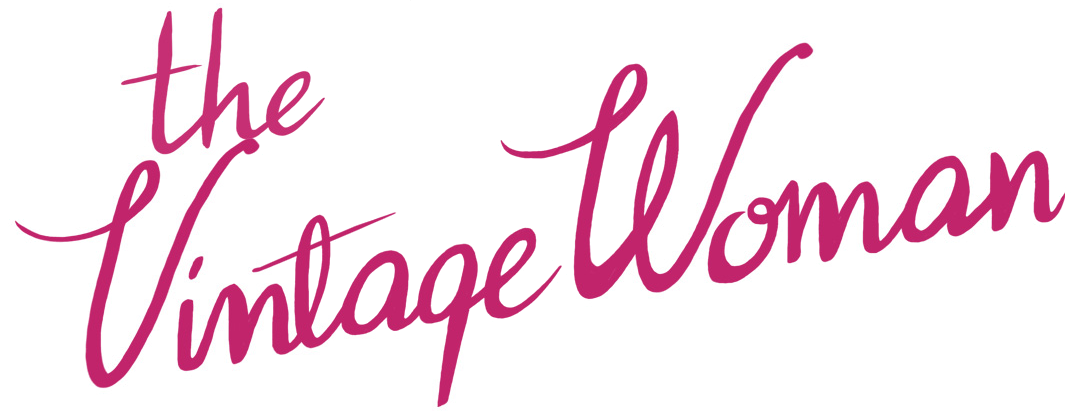

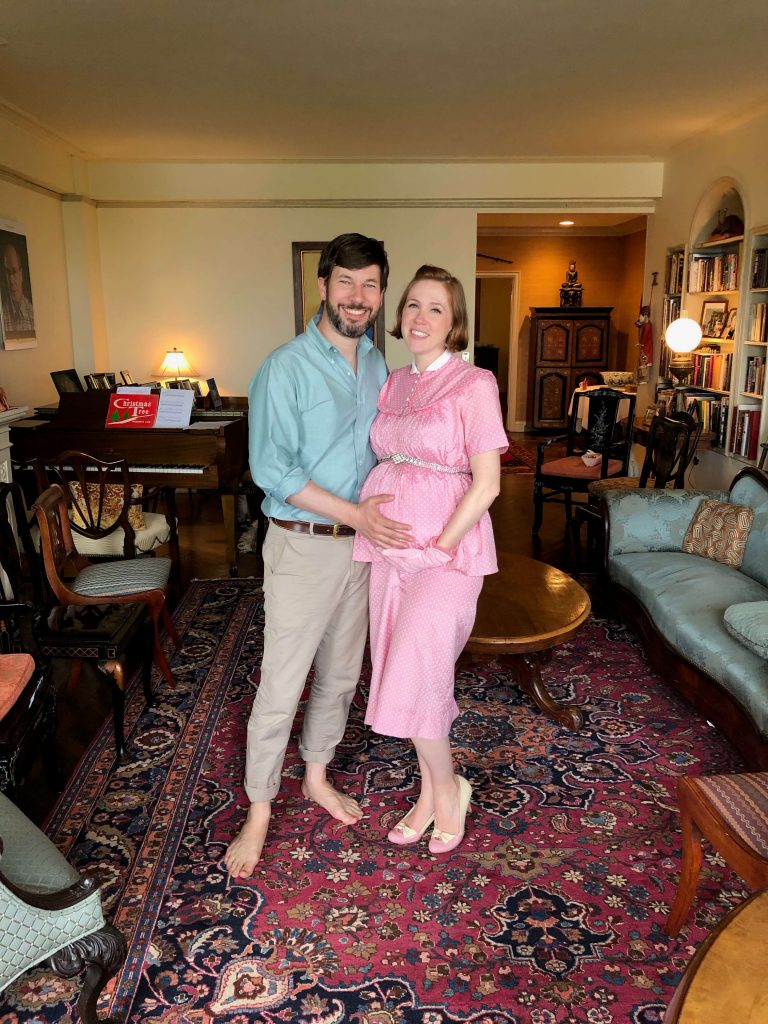
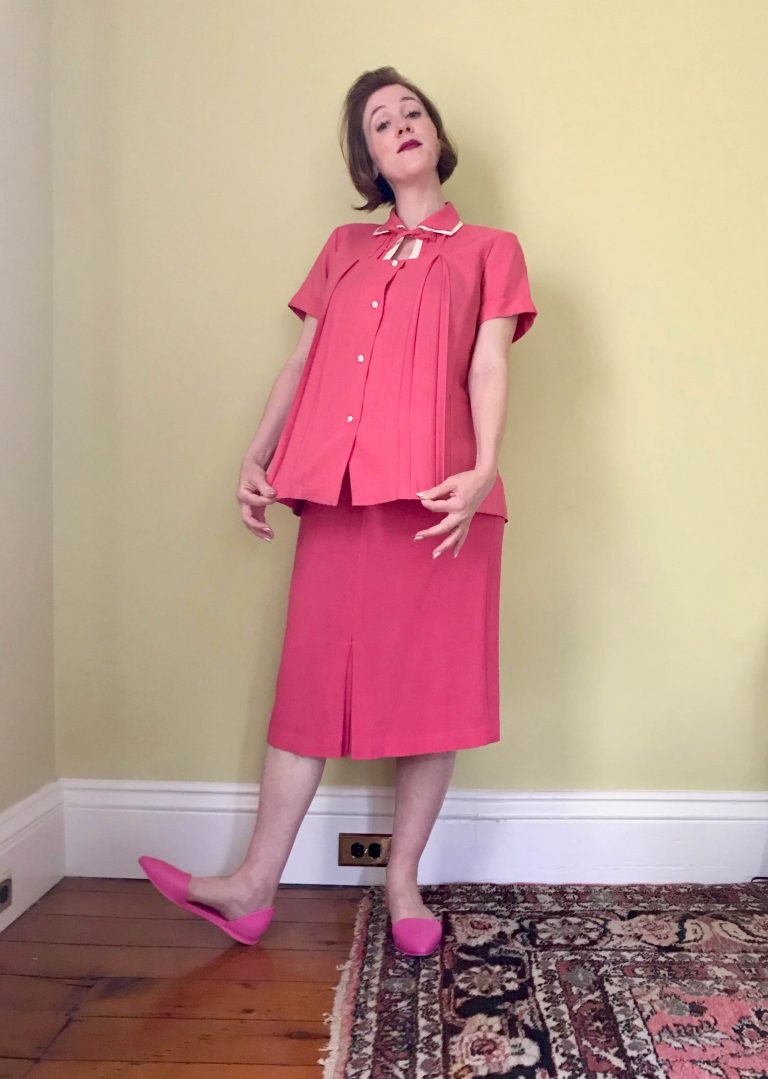
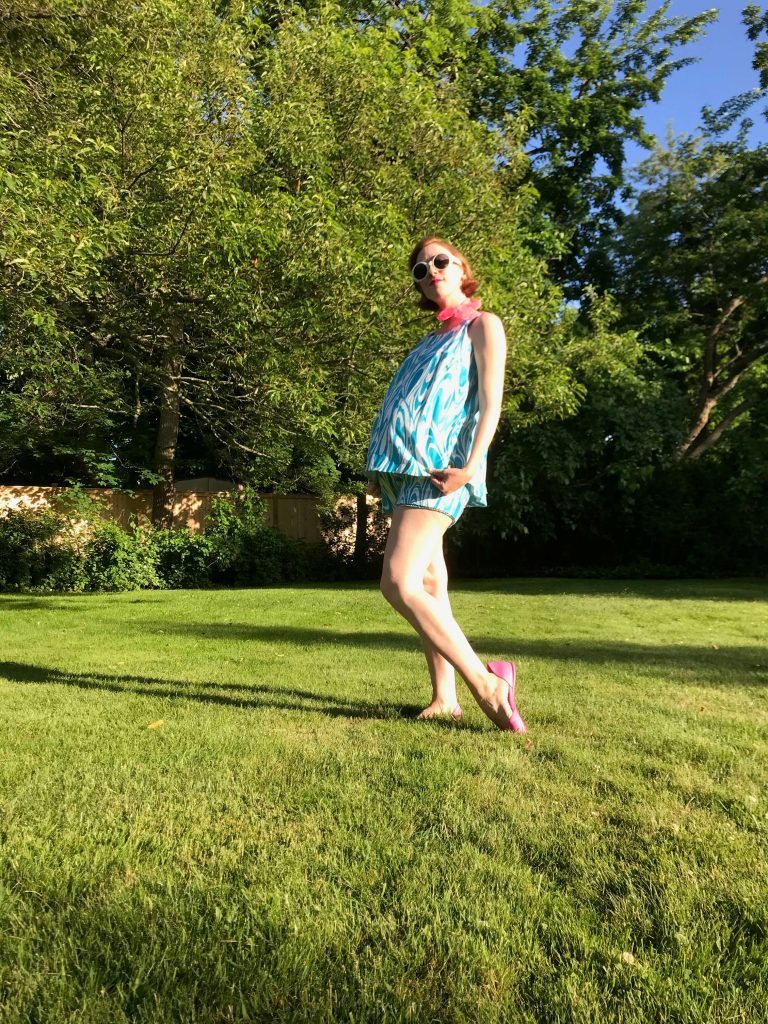
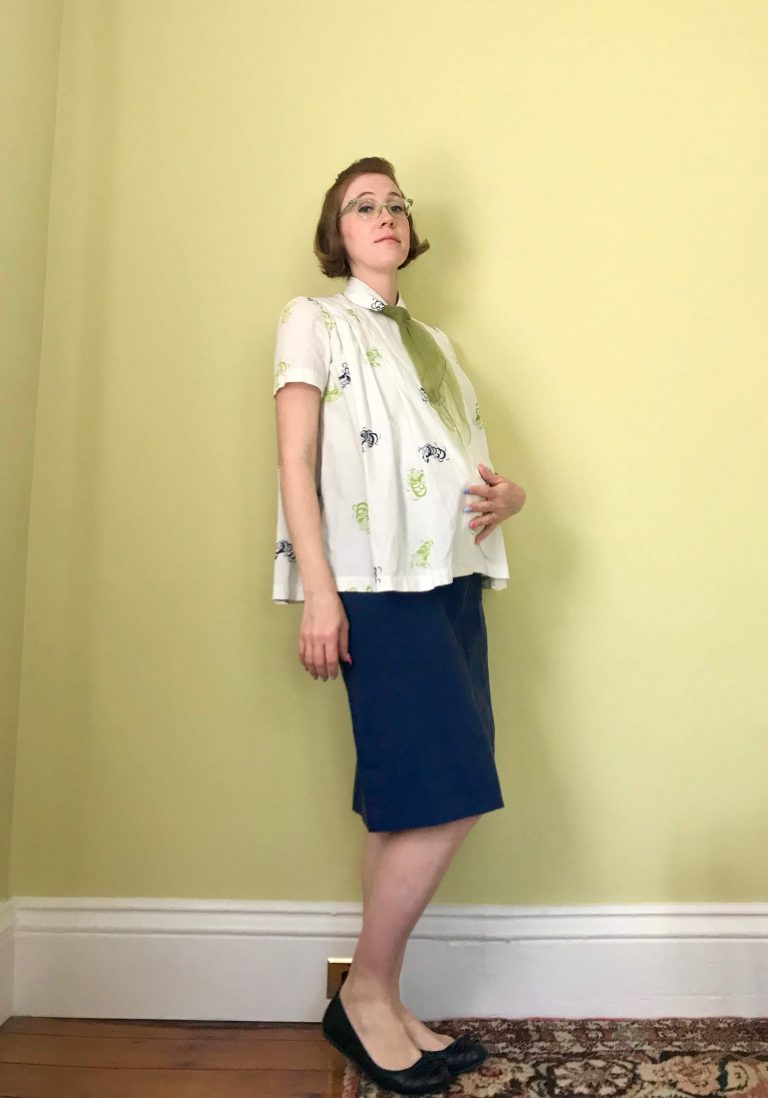
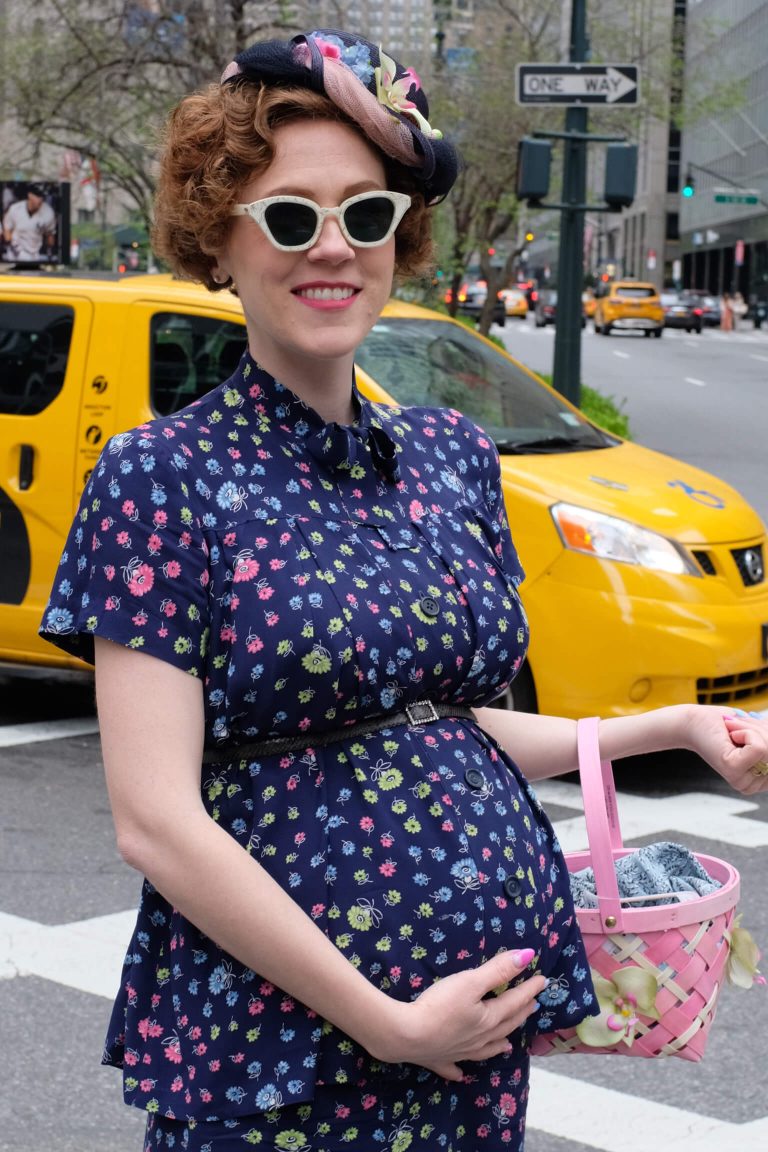
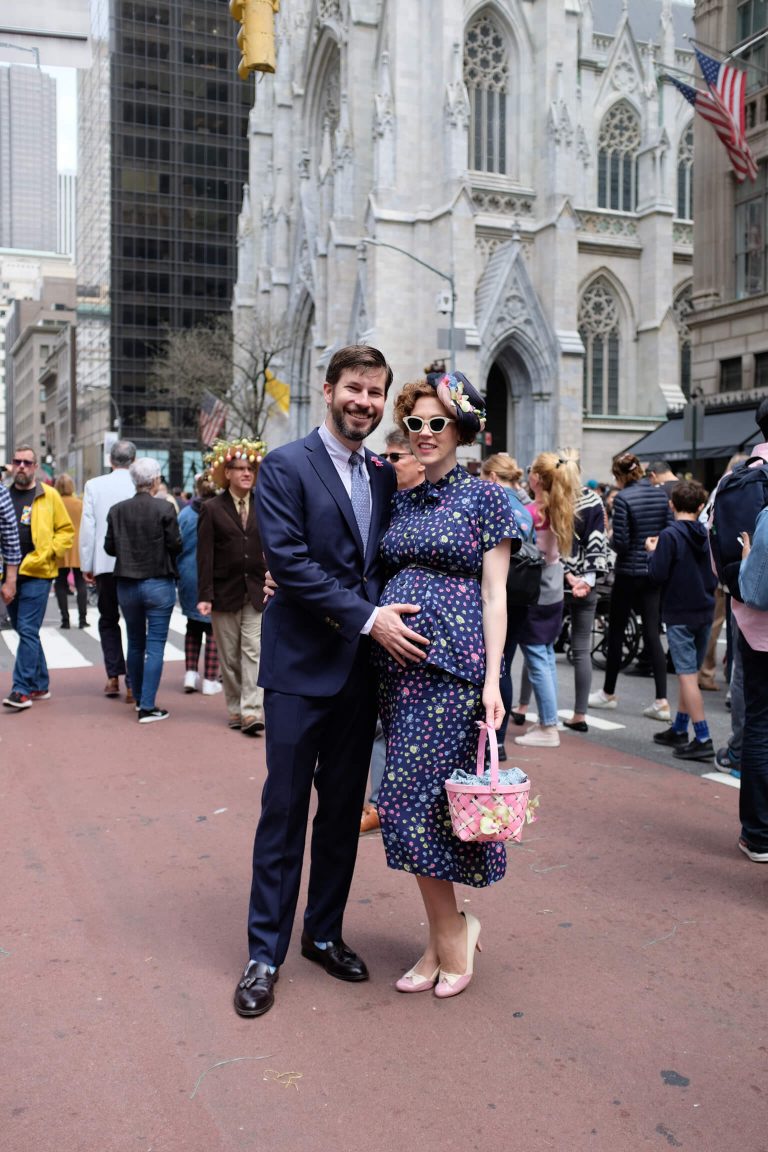
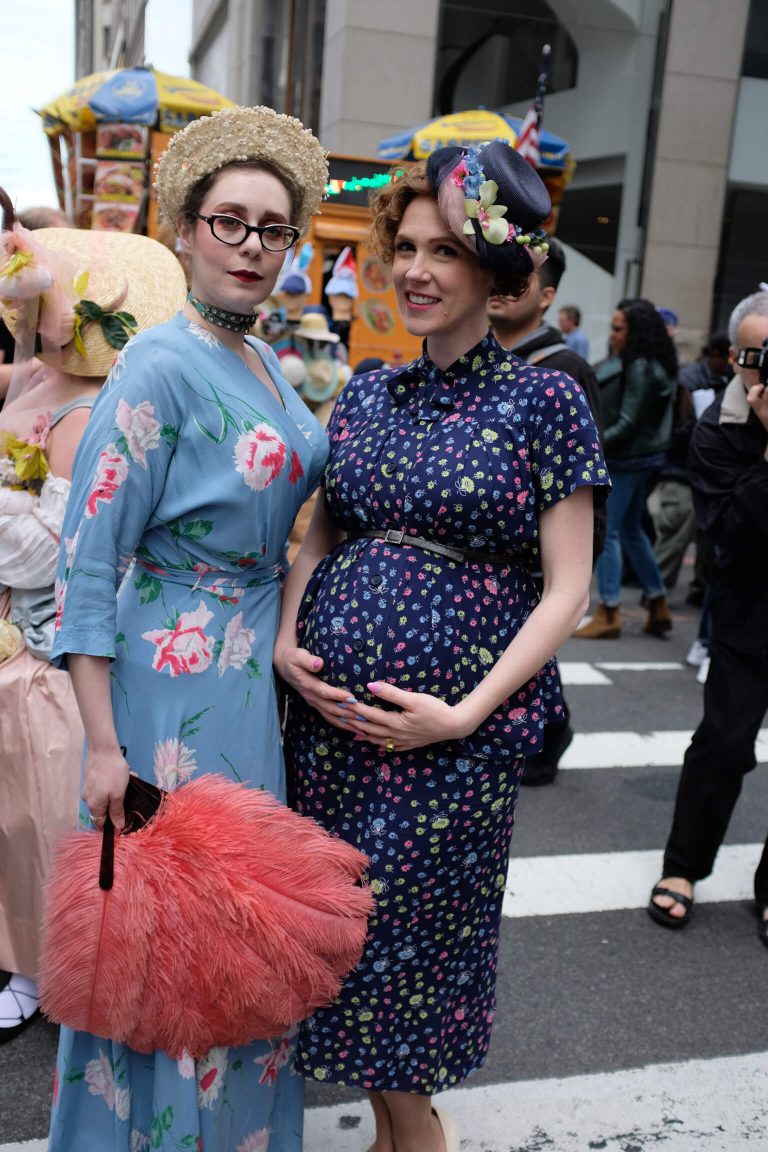
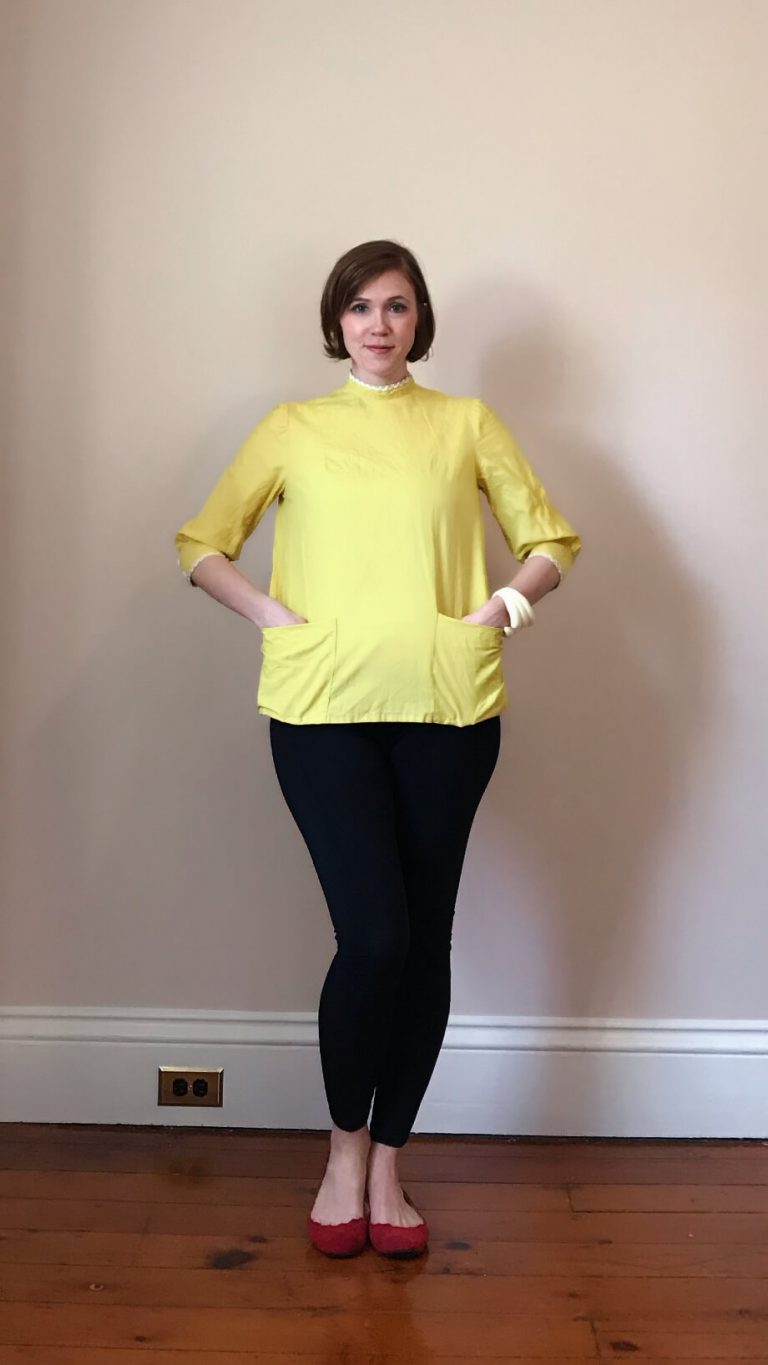
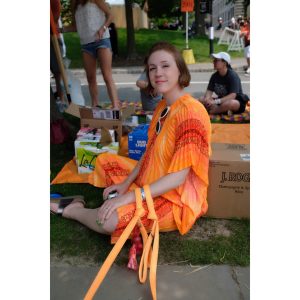
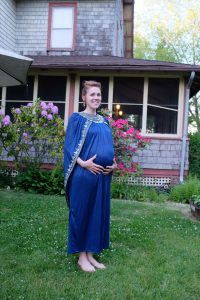
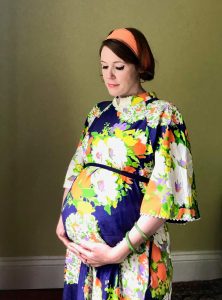
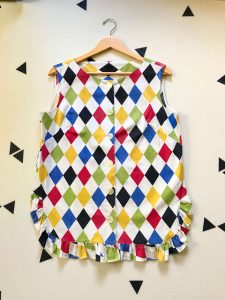
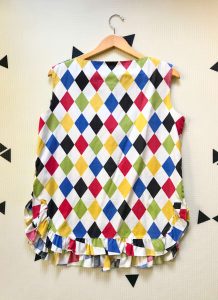
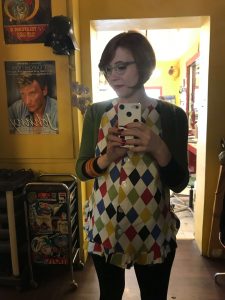
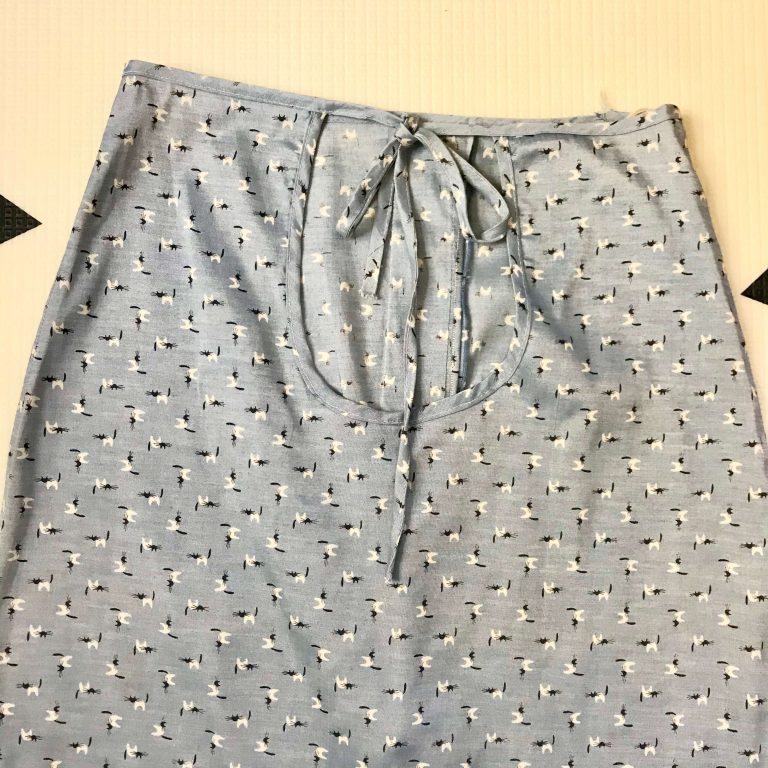
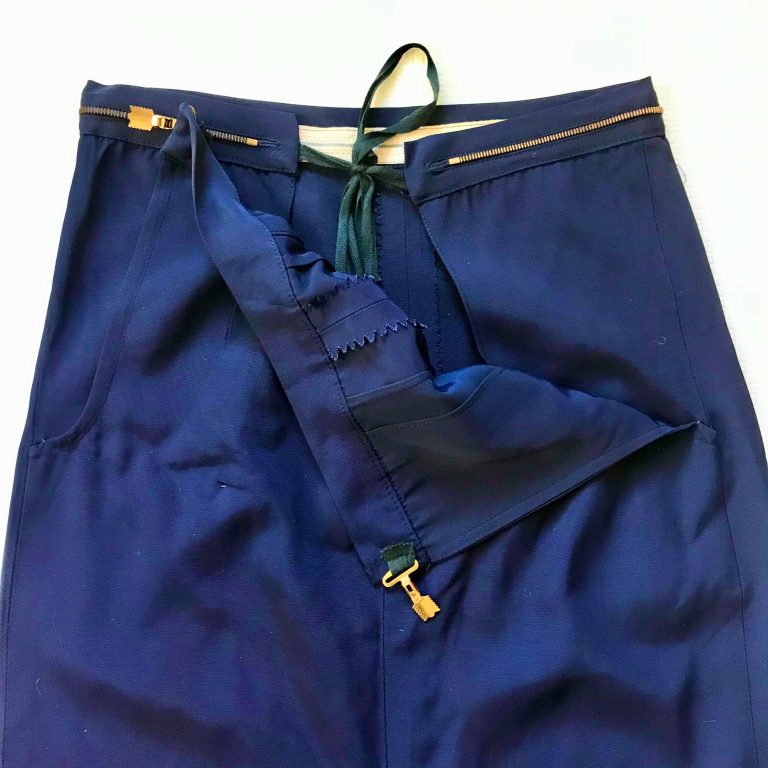
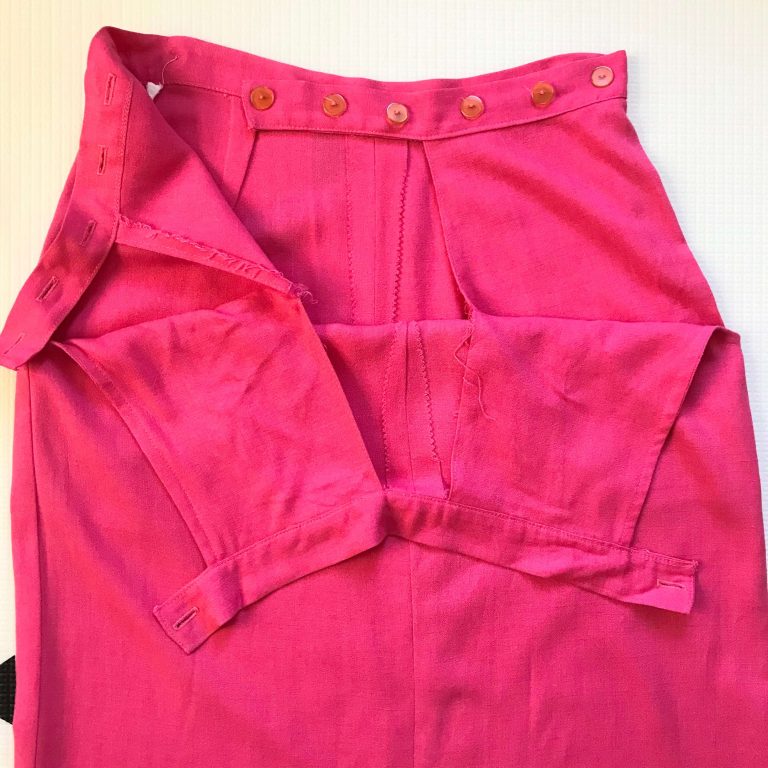
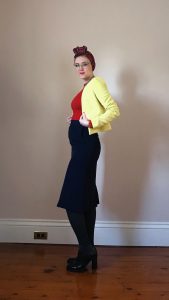
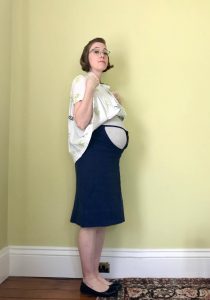
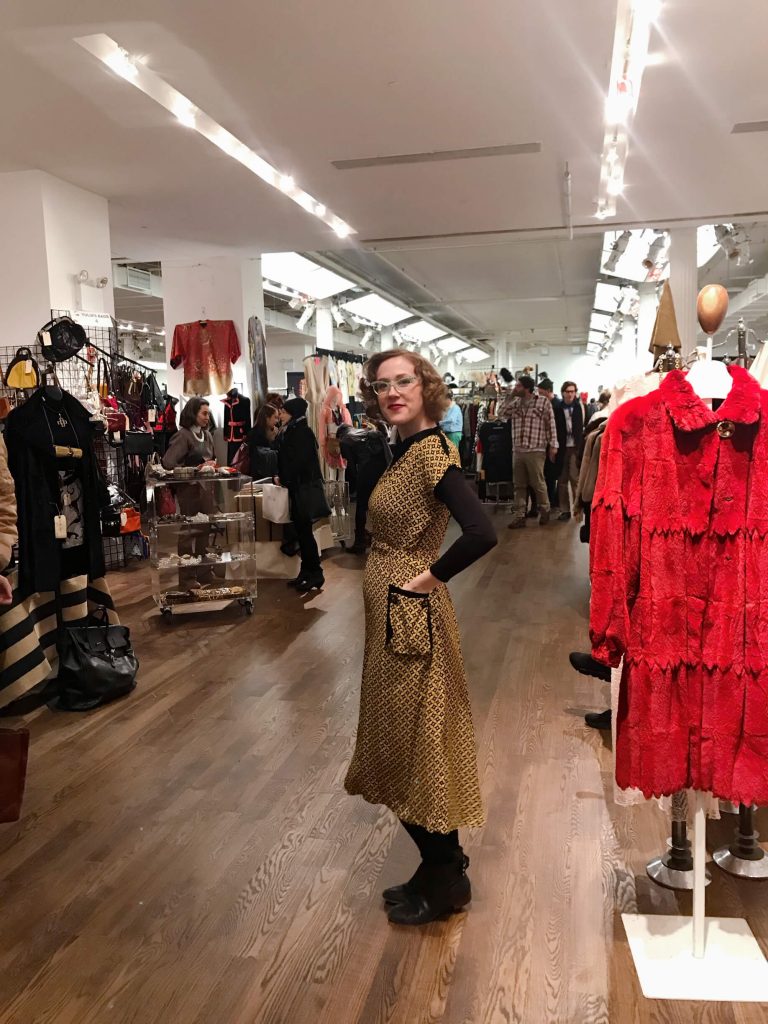
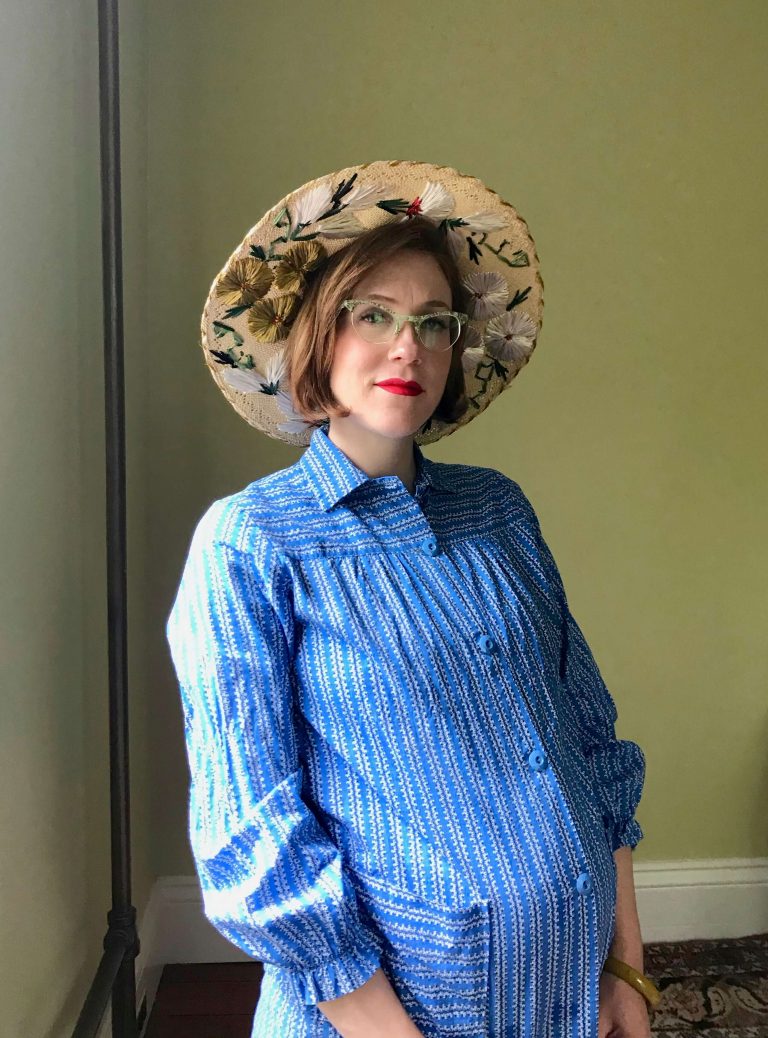
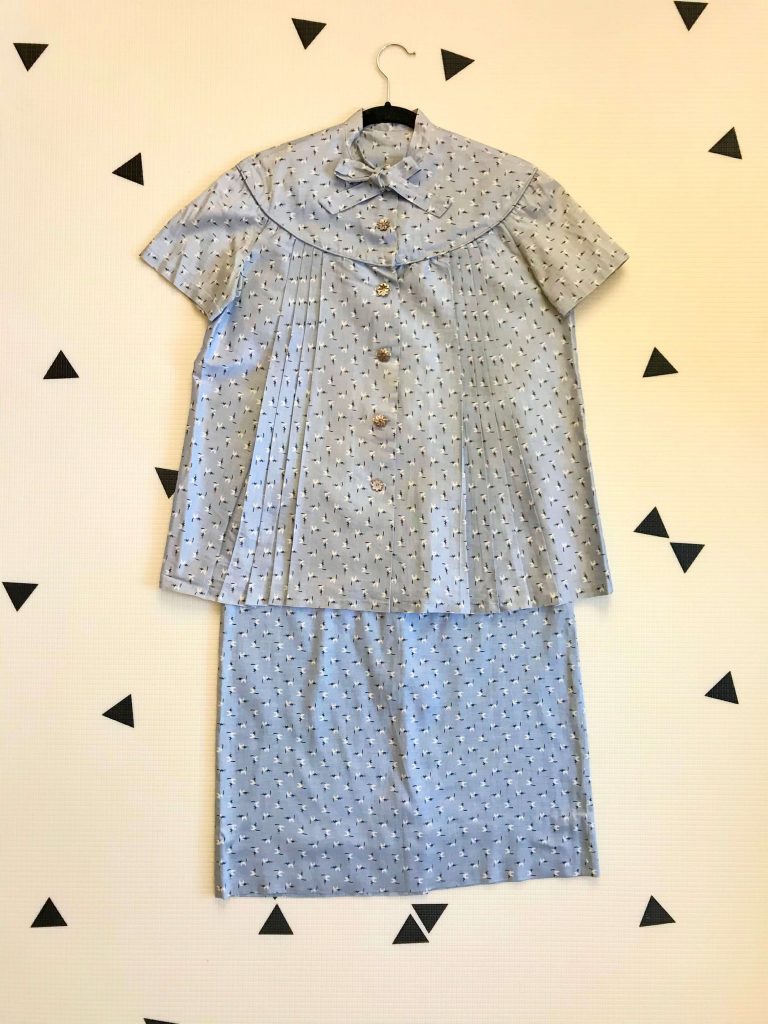
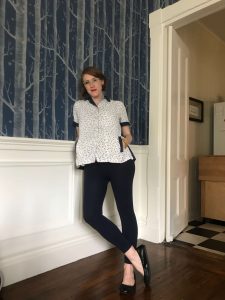
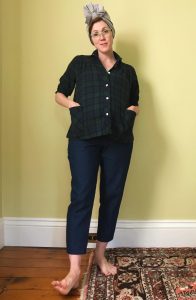
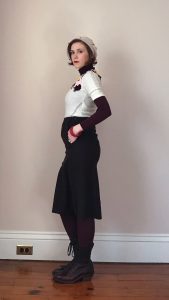
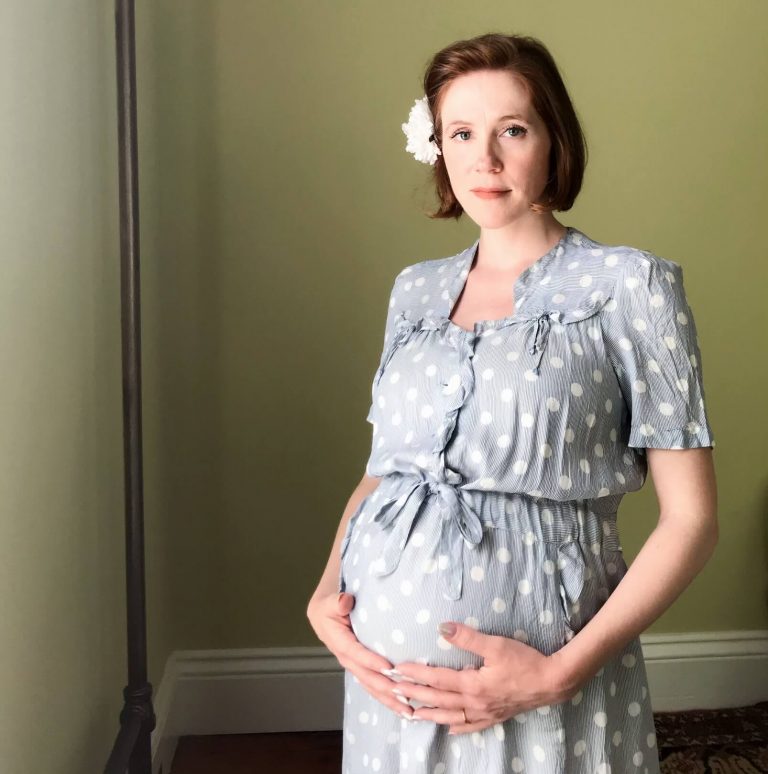
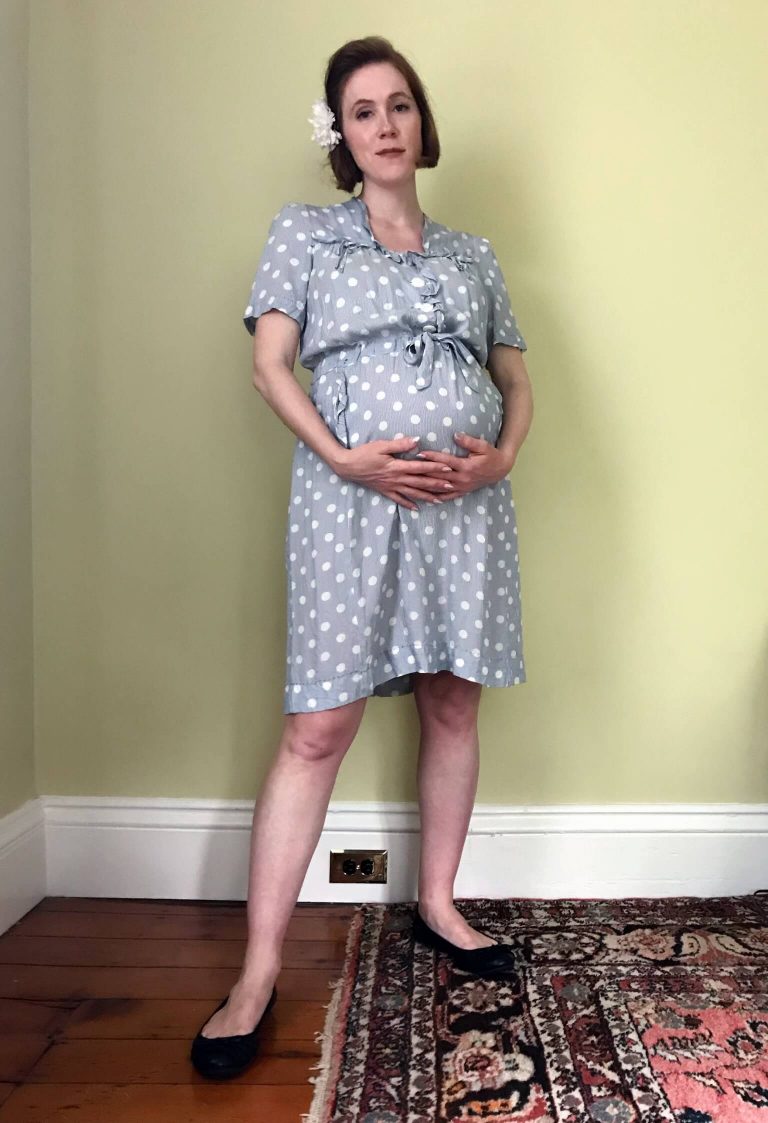
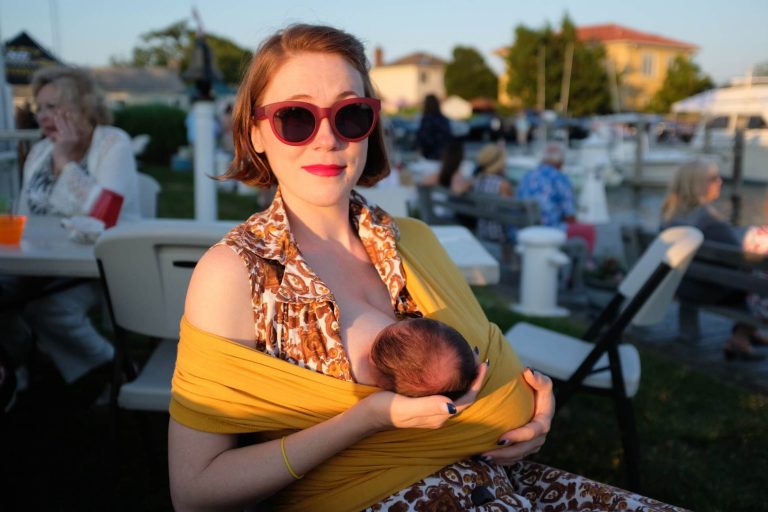
This article gives me more confidence to wear a maternity skirt and jacket set from the late 1940’s, which belonged my grandma. The label in it says “Gay Deceiver”!